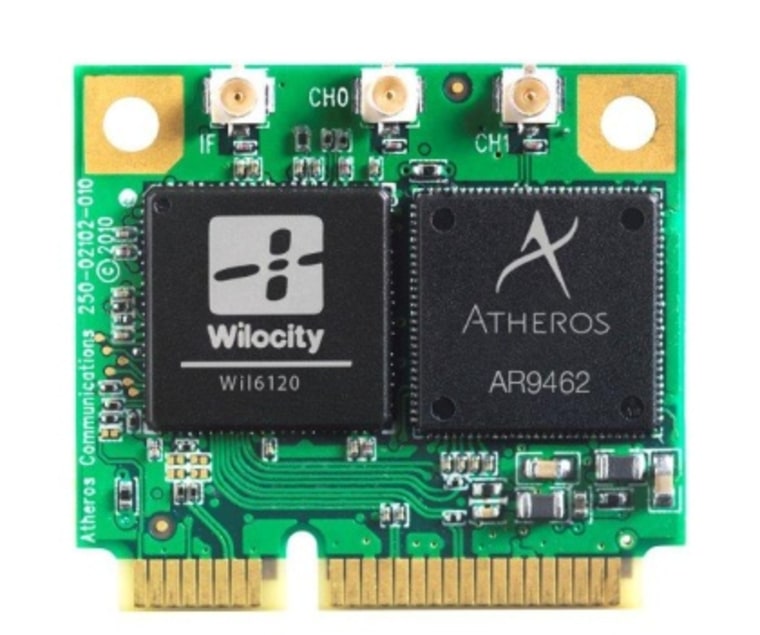The most futuristic and potentially ubiquitous technology at CES wasn't under a 100-foot-tall logo or surrounded by smiling models — it was off the main walkways, in a small meeting room just big enough for a desk and a few monitors. It is, or at least could be, the next version of Wi-Fi.
Wi-Fi is so common and used by so many devices that it's starting to become a problem. Within the bands of radio spectrum carved out for Wi-Fi communication, there are only so many channels and frequencies that devices can connect over. This leads to interference, low speeds, and dropped signals.
Just ask anyone who's ever been in a room with a couple hundred Wi-Fi devices — getting and keeping a signal can be difficult. Even Steve Jobs had a demo fail on stage because of how dense the air was with Wi-Fi communications.
And it's not because Wi-Fi hasn't evolved over time. The set of rules and frequencies and all kinds of technical details defining "Wi-Fi" has changed over the years — that's the origin of things like the codes on the end of your routers: 802.11 B, G, N, and so on.
So the pressure is on to find a replacement that does what Wi-Fi does, but better: A secure, short-range, high-bandwidth wireless protocol for home use. That's what the Wireless Gigabit Alliance (or WiGig) started looking into about five years ago.
NBC News spoke with Dr. Ali Sadri, WiGig's president and chairman, about the next generation of wireless. The take-away from the largely technical interview was this: WiGig's specifications provide for an in-home wireless system like Wi-Fi that goes far faster, can handle more devices with less interference, is more secure, and uses less power (handy on ever more power-hungry mobile phones).
This is due to the use of the 60-gigahertz band of radio spectrum. The reasons why are complicated and technical, but the 60-GHz band is sort of like a brand new highway compared with the retrofitted roads of today's Wi-Fi devices. They can carve up the spectrum better, design the devices with more advanced features, and generally fulfill the needs of a modern wireless device better. This video gives a rough outline of some of its features and goals:
For instance, one thing 60-Ghz devices will do (possible, but not common in Wi-Fi) is called "beam forming"; This is when a set of antennas is used to produce a wireless signal that doesn't blast out in all directions, but rather in a narrow beam aimed at the device with which it's communicating. How this is done is a complex and highly technical process, but it's part of the spec and it allows devices to save power, increase range and cut down on interference. Why should your signal be flying through your neighbors' house when it could be sent directly to you in a beam a few inches wide?
Another natural benefit of 60-GHz wireless signals is that they dissipate rapidly in the atmosphere: After a few hundred feet, the radiation is naturally absorbed by the oxygen in the air. That would be bad if 60-Ghz wireless was meant to send signals between mountaintops — but it isn't. Instead, it means that the signal stays local, doesn't travel too far and is strongest right where you need it: In the living room.

So when will you see devices using this miraculous technology? It'll be at least a year, Sadri told NBC News. While companies like Wilocity are anticipating the industry by creating 60-GHz compatible chipsets today, only a few devices like this Dell laptop have included the capability so far. What's the use of a 60-GHz laptop if your home network doesn't support it?
WiGig was recently absorbed into the larger and older Wi-Fi Alliance, which will integrate its engineering and specifications and help accelerate adoption.
"You'll hear more from us in 2013, but 2014 is really the year we'll start to be visible," Sadri said, though by what name it will be known then is still up in the air — so to speak.
Devin Coldewey is a contributing writer for NBCNews Digital. His personal website is coldewey.cc.
